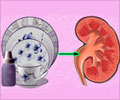Recent research suggests higher aortic stiffness could be one of the several factors leading to high blood pressure.

"Vascular stiffness increases with advancing age and is a major risk factor for age-related morbidity and mortality. A compliant aorta provides an important buffer for each ventricular contraction that maintains pulse pressure at low levels. Stiffening of the aortic wall and improper matching between aortic diameter and flow are associated with unfavorable alterations in pulsatile hemodynamics, including an increase in forward arterial pressure wave amplitude, which increases pulse pressure," according to background information in the article. "The association between vascular stiffening and blood pressure is particularly interesting because the functional relationship is likely bidirectional. Elevated blood pressure may cause vascular damage and accelerated conduit artery stiffening. Conversely, aortic stiffening increases pressure pulsatility and therefore affects systolic blood pressure. However, temporal relationships between vascular stiffness and blood pressure remain incompletely elucidated. In particular, whether vascular stiffness antedates hypertension or vice versa is unclear."
Bernhard M. Kaess, M.D., of the National Heart, Lung, and Blood Institute's Framingham Heart Study, Framingham, Mass., and colleagues the examined temporal relationship between vascular stiffening and blood pressure by evaluating vascular stiffness, central hemodynamics, peripheral blood pressure, and incident hypertension. The investigation was based on the 2 latest examination cycles (cycle 7: 1998-2001; cycle 8: 2005-2008 [last visit: January 25, 2008]) of the Framingham Offspring study (recruited: 1971-1975). Temporal relationships among blood pressure and 3 measures of vascular stiffness and pressure pulsatility derived from arterial tonometry (carotid-femoral pulse wave velocity [CFPWV], forward wave amplitude [FWA], and augmentation index) were examined over a 7-year period in 1,759 participants (average age, 60 years). The primary outcome measures were blood pressure and incident hypertension during examination cycle 8. The secondary outcomes were CFPVW, FWA, and augmentation index during examination cycle 8.
The researchers found that aortic stiffness, central FWA, and wave reflection were jointly associated with future systolic blood pressure, pulse pressure, and incident hypertension. Initial blood pressure traits were associated with future FWA and augmentation index but not with aortic stiffness assessed by CFPWV.
Brachial artery measures of microvascular resistance and endothelial function were jointly associated with incident hypertension after considering blood pressure and tonometry variables.
"Our data suggest that aortic stiffness, central pressure pulsatility, peripheral wave reflection, large artery endothelial function, and microvascular function jointly antedate and potentially contribute to the development of clinical hypertension. Arterial stiffness and function may therefore be important potential targets for interventions aimed at preventing incident hypertension," the authors write.
Advertisement
Source-Eurekalert















